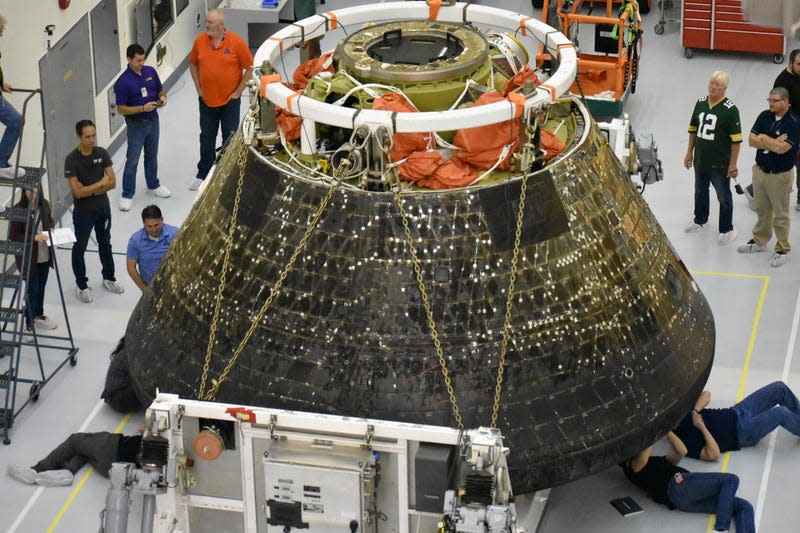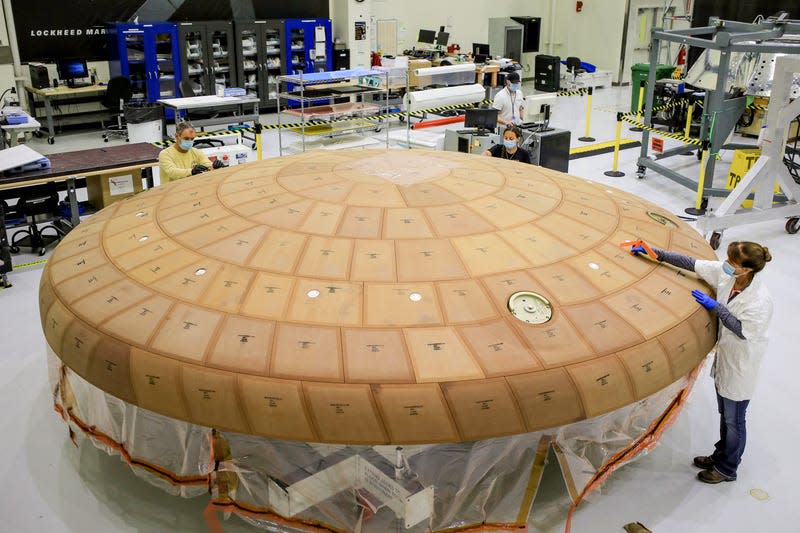Orion’s Heat Shield Looked Wonky After Artemis 1 Moon Mission, NASA Says

Orion set several records during the Artemis 1 mission to the Moon, in addition to surviving 5,000-degree Fahrenheit temperatures during atmospheric reentry. The spacecraft’s innovative heat shield made this possible, but NASA’s follow-up analysis of the protective layer has revealed levels of wear and tear that weren’t predicted by models.
“Orion exceeded all performance expectations,” Howard Hu, manager of the Orion program, told reporters yesterday at a NASA briefing to discuss the latest Artemis 1 findings. Over 160 flight test objectives were achieved, of which 21 were added over the course of the mission as managers got “better performance than expected,” he said. The uncrewed Orion capsule splashed down in the Pacific Ocean on December 11, 2022, following a 26-day trip to the Moon and back.
Read more
These Winning Close-Up Photos Show Life That's Often Overlooked
Remembering Enterprise: The Test Shuttle That Never Flew to Space
During inspections and analysis, however, investigators noticed some unanticipated variations across Orion’s heat shield. “Some of the charred material ablated away differently than what our computer models and what our ground testing predicted,” Hu said. “More of this charred material was liberated during reentry than we had expected.”
A dedicated investigation has been launched on the matter, and while NASA is “working hard to learn more about this,” there’s overall a “lot of work to be done in this investigation moving forward,” he explained, adding that it’s a big task to correlate the associated data. It’s not immediately clear how much more charred material came off than anticipated—“that’s the analysis we need to do,” Hu said. Investigators will need to individually examine each heat shield block, of which there are more than 180.
Orion is intended to carry astronauts, but the unexpected performance isn’t a safety issue, according to Hu. He said a “significant amount of margin” was left over, and he doesn’t “believe we reached any limits in terms of a margin perspective.” The protective heat shield did its job and then some, but because this behavior wasn’t predicted by models, it’s something NASA must now investigate. NASA wants to make sure it has the best possible heat shield to protect human passengers during upcoming missions, Hu explained.

On its return from the Moon, Orion slammed into Earth’s atmosphere at speeds reaching 24,600 miles per hour (39,590 kilometers per hour). This produced temperatures in excess of 5,000 degrees Fahrenheit, which the heat shield proved capable of handling. The heat shield uses tiles made from an ablative material called Avcoat to protect the capsule and crew during atmospheric reentry. An ablator “burns off in a controlled fashion during re-entry, transferring heat away from the spacecraft,” NASA explained in a December 8 press release. The new Avcoat tiles measure anywhere from 1 to 3 inches thick, covering the heat shield’s outer surface.
Engineers expected some charring of the ablative material, Hu said, but little pieces coming off, rather than ablating (i.e. burning off in a controlled manner) was a surprise. We “want to understand that,” he said.
Despite this issue, NASA officials said the space agency is moving ahead with the planned Artemis 2 mission, which will involve a crew of astronauts. Repairs are underway at the launch pad, the new Space Launch System (SLS) rocket is being built, and the next Orion capsule is set for tests, as most of it has already been assembled. Like Artemis 1, the Artemis 2 mission will see an Orion capsule journey around the Moon and back, with the big difference being the inclusion of an actual crew.
Speaking to reporters during the Tuesday briefing, Jim Free, associate administrator for NASA’s exploration systems development mission directorate, said preparations for Artemis 2 “continue to move forward” and that now is the “time for our vigilance to continue,” so that “we understand the risks that we’re taking.” Encouragingly, there’s nothing in the Artemis 1 post-flight analysis that’s giving NASA any reason to change its launch date for Artemis 2, which is slated for late November 2024, Free said.
Artemis 3—a crewed mission to the lunar surface—is planned for late 2025, but Free cautioned that key milestones will need to be met to make that happen, namely the certification of SpaceX’s Starship megarocket, both as a launch vehicle and as a lunar lander, in addition to the space agency receiving the requisite Moon suits from Axiom Space.
More: SpaceX Is Closer Than Ever to Starship’s First Orbital Flight
More from Gizmodo
Sign up for Gizmodo's Newsletter. For the latest news, Facebook, Twitter and Instagram.

